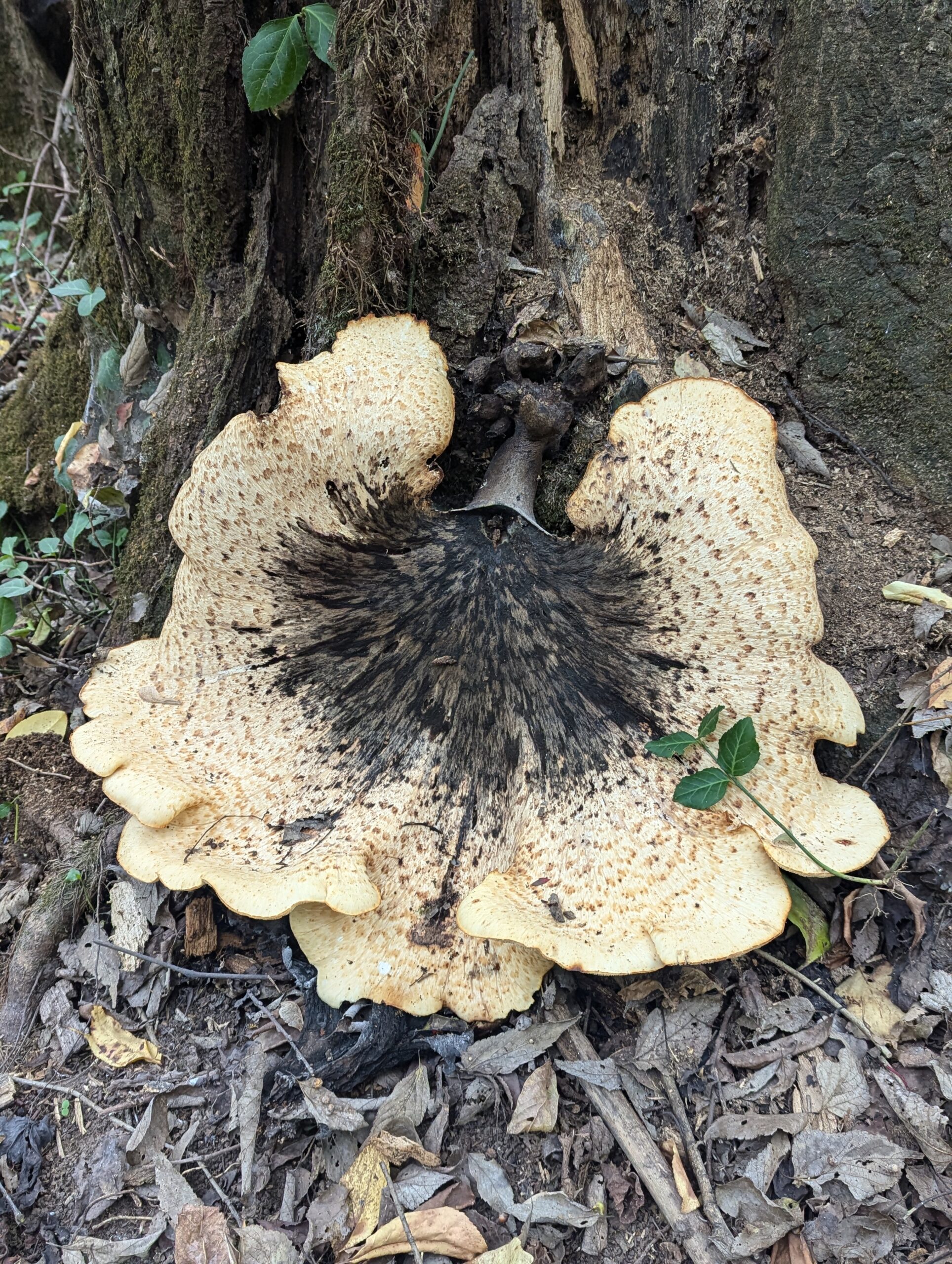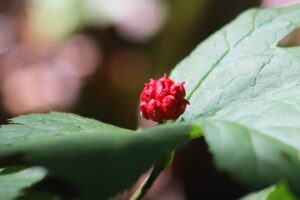by Jacob Crider
It’s not every day that you get to see a fungus as big as a lunch tray! Check out this astounding Dryad’s Saddle (Polyporus squamosus) found at Creasey Mahan. When these mushrooms reach this size, they really do assume the shape of a saddle, although this one may be a little too big for a typical dryad (more commonly referred to as fairies or wood nymphs). Another name for Polyporus squamosus is Pheasant’s Back, which alludes to the similarity between the tops of these mushrooms and the feathery streaks of Pheasant, a common game bird native to Asia and Europe.
Dryad’s Saddles are an organism in nature that takes part in the complex decomposition cycles that allow for our natural environments to rejuvenate and grow. Decomposers, such as fungi, slime molds, bacteria, insects, worms, centipedes, and isopods help break down, transform and recycle the nutrients found in decaying leaves, trees, animals, plants, and even other decomposers. Without these decomposition cycles, ecosystems cannot function and will eventually become barren and lose the diverse webs of life that our world bestows. Dryad’s Saddles are saprobes meaning feed on decaying organic materials, and in their case, they feed on the dead wood of trees. They can grow on a variety of species including Ash, Maple, Tulip Poplar, and Willow. They are part of a group of mushrooms known as polypores, which have an intricate series of small pores on the underside of the mushroom body that expel spores when they are ready to reproduce. They are normally found in the months of April through October.
A great example of a product of decomposition is our soil! A notable layer of the soil in our forests is humus, the top layer containing the highest amounts of nutrients allowing for plentiful plant growth and adequate situations for decomposers to reproduce and continue their crucial labor in ecosystem. It usually consists of decaying leaves, sticks, logs, decaying organisms, and detritus (a fancy name for poop). The process of creating this nutrient gold mine is called humification, in which saprobes like fungi play an important role. Additionally, humus is an important is an important medium for mycelium, which are the roots of a fungi, very similar to the trees they help decompose. Humus rich soils with healthy mycelium networks will allow for healthy trees to grow, and furthermore, healthy Dryad’s Saddles to grow. It’s all so cyclical and beautiful.
Along with playing a part in the decomposition processes of the forest, many species of fungi are also edible to wildlife. Animals such as squirrels, rodents, turtles, and slime molds are known to consume these organisms, and Dryad’s Saddles are actually edible to humans! They are most palatable when they are smaller than the size of your palm and become tough and leathery when they grow large. Disclaimer, please do extensive research and seek out educational foraging programs before trying to consume mushrooms and start with small portions. While there are many edible mushrooms in the wild there are also many poisonous ones. Consume at your own risk. With that being said, when you are ready to try these fungi out for a taste, they are good sauteed in butter or olive oil and have a rich texture and flavor.



